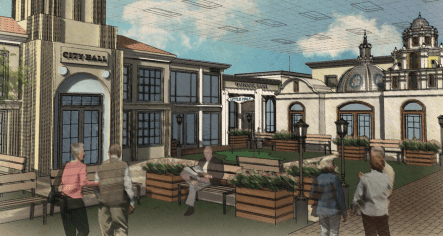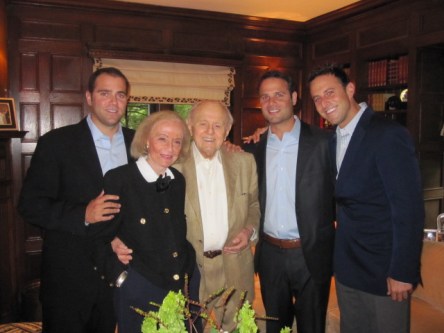Artificial intelligence (AI) has been used to solve complex issues in the medical field—from precisely determining medication dosages to helping doctors identify and treat cancers—for years. As the benefits of artificial intelligence used in science continue to be explored, researchers have announced a breakthrough discovery. On the heels of an alarming CDC study showing the incidence of Alzheimer’s Disease is expected to double to 14 million by 2060, scientists revealed this month that AI may be able to predict cognitive decline leading to Alzheimer’s up to five years before the disease is diagnosed. Alzheimer’s disease is the most common form of dementia, characterized by memory failure leading to loss of independence. According to the CDC study, it is the sixth leading cause of death in the United States and the fifth leading cause of death among adults aged 65 and older. Alzheimer’s and memory care are predicted to be the biggest area of growth in senior living, according to a recent survey. With limited diagnosis and treatment, early detection and prevention of the condition are the most effective methods of thwarting Alzheimer’s. Knowing early detection is key, a team of Canadian scientists led by Mallar Chakravarty, computation neuroscientist and McGill University assistant professor, created an algorithm designed to learn the signatures of dementia onset. Researchers trained the algorithm using MRI imaging, genetics and clinical data from 800 patients, ranging from normal healthy seniors to persons experiencing mild cognitive impairment to patients suffering with fully-developed Alzheimer’s disease. While the team responsible for this scientific leap has replicated their study results on other independent patient sample groups, they hope to fine-tune the algorithm even more. “We are currently working on testing the accuracy of predictions using new data,” says Dr. Chakravarty. “It will help us to refine predictions and determine if we can predict even further into the future.” The more data the scientists collect, the better doctors will be able to identify people at greatest risk for cognitive decline leading to Alzheimer’s. In the senior living industry, this development will help clinical staff recognize patterns which otherwise might be easily missed. Spotting the first symptoms could guide seniors at risk for Alzheimer’s to the right path for treatment and initiate lifestyle changes that may delay the beginning stages of the disease or even prevent it...
Triggers to the Past
Memory Care
The past is alive in the unlikeliest of places. Nestled inside a 20,000-sqft light industrial building in the heart of Chula Vista, Calif., Glenner Town Square harkens back to a different era: 1950s San Diego to be exact. Conceived as an immersive experience for seniors in their 80s, Glenner Town Square is at the forefront of what’s being called Reminiscence Therapy. The hope is that by surrounding seniors with familiar touchstones, like a 1959 T-bird or black and white film, those suffering from dementia will be able to capitalize on their remaining cognitive function to interact with the outside world. “If you can create an environment that’s designed in a way that captures that part of their life and those memories that are still intact and strong, they can function in a way that’s competent,” explains Dr. Daniel D Sewell, Director, Senior Behavioral Health, UCSD in a video about the project. “They can be comfortable and feel good about themselves because it plays to the individual’s strengths.” A Multiplicity of Places Reminiscence Therapy (RT) focuses on creating an immersive environment for patients using “tangible props” from their past to help them preserve cognitive function and improve their quality of life. At Glenner Town Square, everything from building facades to the interiors is designed to invoke a past that, to many suffering from Alzheimer’s and dementia, feels much more real than the present. By creating a safe and familiar environment for patients, the creators of Glenner Town Square hope to provide a sense of comfort, peace and continued vitality for patients. In addition to the 8,500-sqft village – that includes buildings based on the city of San Diego from 1953 to 1961 – Glenner Town Square will include a working cinema, a 50’s-style diner, a...
Memory Care Cruise
Bonding Over Senior Health
This fall, aboard Holland America’s MS Eurdam, caregivers and seniors suffering from dementia and their families will set sail to cruise the Alaskan coastline while learn moreing about the disease. The brainchild of Lisa Maria Chirico, CEO founder of Nursinghomeology, the event is designed to “inspire and empower caregivers and their families.” First-Hand Experienc Chirico herself is no stranger to the challenges facing caregivers and family members, having had to care for her father who suffered from Alzheimer’s. Kathy Shoaf, RN, BSN, ATP and the owner of Elite Cruises and Vacations, will be co-hosting the event with Chirico. Shoaf has 25 years of experience in senior care management. A specialist in accessibility travel and geriatric neurology, Shoaf also served as inspiration for the cruise. “The idea for a dementia-friendly cruise grew out of Kathy Shoaf’s senior-friendly, ‘bucket list’ cruises,” Chirico told McKnight’s Senior Living in a recent interview. “Taking the idea to another level, Kathy began seeking out senior care professionals and former caregivers turned dementia coaches and consultants — like me — to co-host a cruise.” Communication and Commiseration Boasting an esteemed lineup of senior care practitioners and professionals, attendees will be able to participate in workshops, attend sessions and – most importantly – mingle with others professionals and family members experiencing similar challenges. Featuring Brian Kursonis, Founder and President of Faith2Care.org and blogger at withAlzmyheart.com, the cruise will also include talks from dieticians, physicians and dementia care educators. AlzAuthors group plans to host a Book Circle, and there will also be a screening and panel discussion of the film Do You Know Me Now?, recently awarded the Silver Remi Award from the Worldfest Houston International Film Festival. Chirico planned the event in order to provide professional caregivers, residents of assisted living and memory care communities and their families...
Prescription Chocolate...
Senior Health
Cocoa flavonoids could be the key to fighting age-related mental decline and improving cognitive function in older adults. For years, doctors and scientists have been on the lookout for a magic pill, some daily dose able to fight age-related cognitive decline and potentially stop dementia in its tracks. While Mary Poppins counseled a spoonful of sugar to cure most ills, the real nutritional superstar may actually be chocolate. According to a recent article published in Frontiers in Nutrition, cocoa flavonoids- one of the main ingredients in your typical candy bar, could enhance human cognition. “Through a variety of direct and indirect biological actions, in part, still speculative, cocoa and cocoa-derived food have been suggested to possess the potential to counteract cognitive decline and sustain cognitive abilities, particularly among patients at risk,” explain the study’s authors. “Although still at a preliminary stage, research investigating the relations between cocoa and cognition shows dose-dependent improvements in general cognition, attention, processing speed, and working memory.” A Recipe for Healthy Brains Chocolate’s potential to positively impact cognitive function derives from the cocoa flavonoids influence on cardiovascular function as well as its potential as a neuromodulator. In addition to flavonoids, chocolate also contains other “functional ingredients,” including methyl xanthine caffeine and theobromine, which paired together can also positively influence neurocognitive function. “Moreover, cocoa flavanols…exert a protective role on cognitive performance and cardiovascular function specifically impaired by sleep loss, in healthy subjects,” write the study’s authors. “Together, these findings converge at pointing to cocoa as a new interesting nutraceutical tool to protect human cognition and counteract different types of cognitive decline, thus encouraging further investigations.” Sweetening the Golden Years The study’s authors also delve into the possibility regular chocolate consumption could be beneficial for older adults. In addition to protecting cognitive...
Serving Seniors
Bloom Senior Living
There is both a touching family story and a caring resident focus in practice at the senior living residences operated by Yardi client Bloom Senior Living (f/k/a Bloomfield Senior Living), which operates senior care communities in Indiana, Ohio and South Carolina. Bloom’s parent company, Kandu Capital, LLC also owns independent senior residences in Southern California and Arizona, and has acquisitions pending in the Southeast. In the rapidly growing market for residential memory care services, the Bloom model is both personal and heartfelt. The approach may stem from the company’s history. Founder Richard Tischler, a hard-working family man who still comes to the office five days a week at age 98, built a nursing home business with the support of his late wife Ruth, who in her later life suffered from Alzheimer’s disease. Her illness, and the experience of finding a suitable living facility to meet her needs, had an immediate impact on the Bloom approach to care. With Richard’s two sons-in-law (Howard M. Dubin and Mitchell A. Kantor) and three grandsons (Bradley E. Dubin, Scott M. Kantor and Tony Kantor) involved in growing and efficiently operating the family’s seniors housing portfolio, the company strives for the highest quality care and a top-flight customer service experience. They want families and residents to find the type of residential experience, exceptional care and resulting peace of mind that they sought when Ruth Tischler became ill. She and Richard are considered the company’s “Chief Inspiration Officers,” a fitting title. “We went through the process of looking for (a care community) for her and seeing what was out there while we were doing our own search. We looked at it not just from the perspective of being an operator, but from being a family member. We stood in those...





